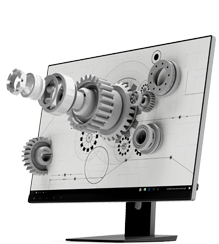What is a capacitive touch screen with mutual capacitance?

Mutual capacitance is currently the most commonly used type, allowing unlimited touch points, supporting higher resolutions, being insensitive to EMI interference, and making more efficient use of sensor space Mutual capacitance utilizes the characterist
What is a capacitive touch screen with mutual capacitance?

Mutual capacitance is currently the most commonly used type, allowing unlimited touch points, supporting higher resolutions, being insensitive to EMI interference, and making more efficient use of sensor space. Mutual capacitance utilizes the characteristic of most conductive objects that can retain charge when they are very close. If another conductive object, such as a finger, approaches two conductive objects, the charge field (capacitance) between the two conductive objects will change due to the human body's capacitance "stealing" some charge.
In a capacitive touch screen with mutual capacitance, transparent conductors are made into specific patterns on two layers of electrodes that are spatially separated, usually as rows and columns. Due to the unique set of touch coordinates generated at the intersection of each row and column, the controller measures each intersection separately, as shown in the figure below. This is the main advantage of capacitive touch screens - the ability to detect touch sensing at each electrode intersection on the screen.
Both self capacitance and mutual capacitance rely on the charge transfer between the human body's capacitance and another single-layer or double-layer electrode, so this capacitive induction method is commonly referred to as "charge transfer".










